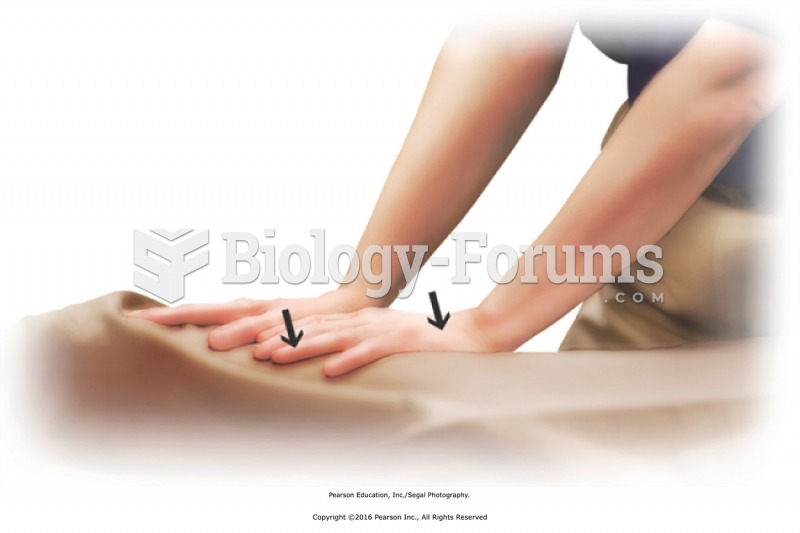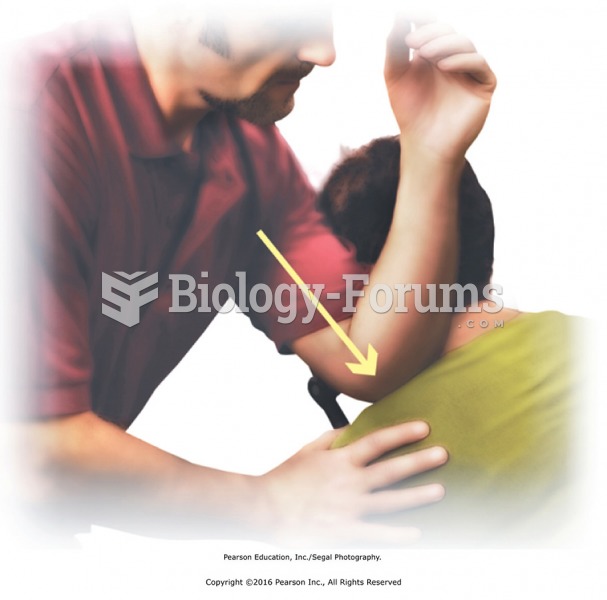|
|
|
Bacteria have been found alive in a lake buried one half mile under ice in Antarctica.
The senior population grows every year. Seniors older than 65 years of age now comprise more than 13% of the total population. However, women outlive men. In the 85-and-over age group, there are only 45 men to every 100 women.
A seasonal flu vaccine is the best way to reduce the chances you will get seasonal influenza and spread it to others.
The lipid bilayer is made of phospholipids. They are arranged in a double layer because one of their ends is attracted to water while the other is repelled by water.
The first monoclonal antibodies were made exclusively from mouse cells. Some are now fully human, which means they are likely to be safer and may be more effective than older monoclonal antibodies.
 Apply skin rolling by lifting the skin and crawling your fingers along the skin while the thumbs ...
Apply skin rolling by lifting the skin and crawling your fingers along the skin while the thumbs ...
 Transition from the lower to the upper limbs with compression over the drape. Apply compression with ...
Transition from the lower to the upper limbs with compression over the drape. Apply compression with ...
 Apply effleurage over eyelids. Using very light pressure, stroke the closed eyelids with your thumbs ...
Apply effleurage over eyelids. Using very light pressure, stroke the closed eyelids with your thumbs ...




